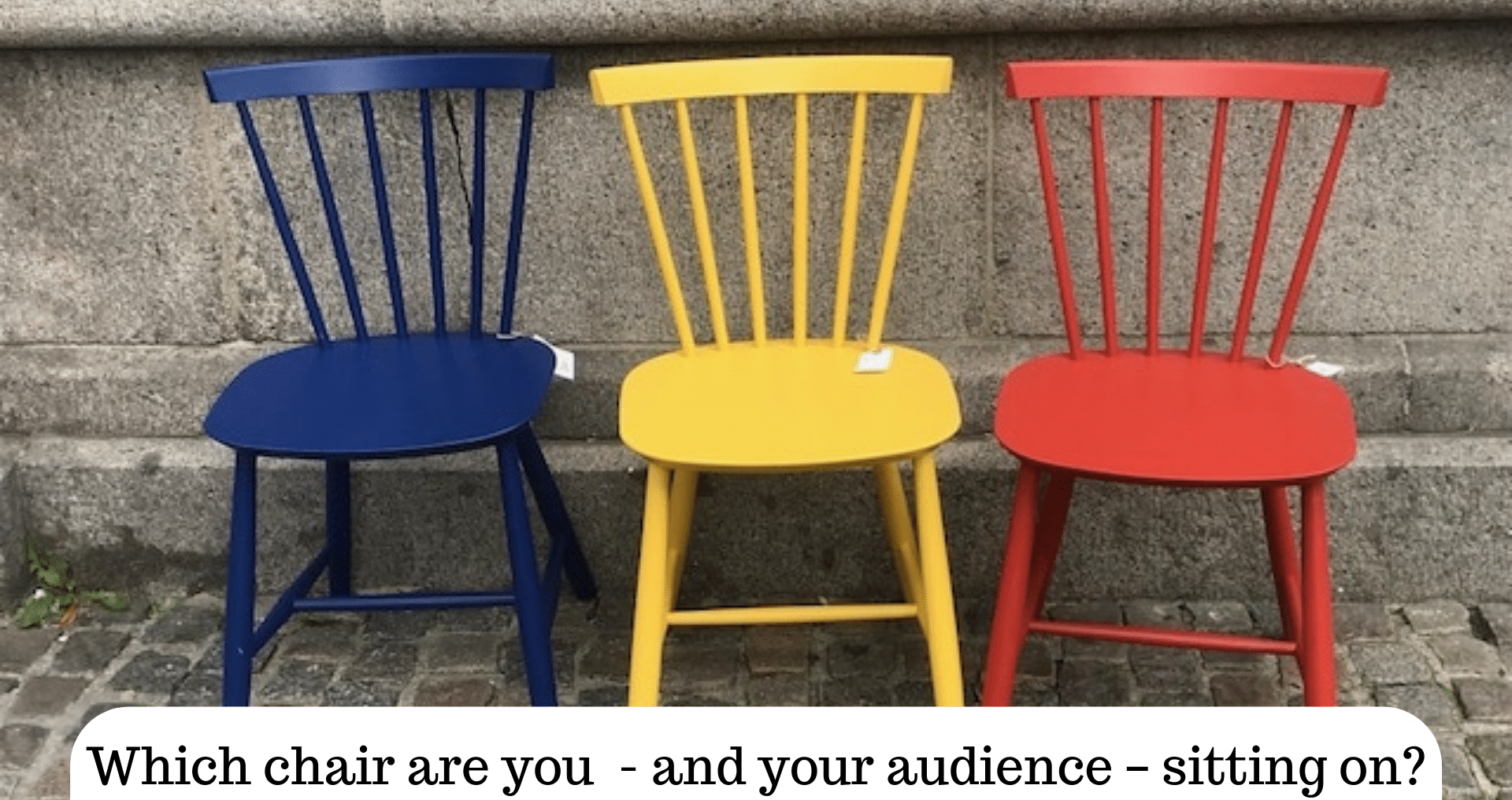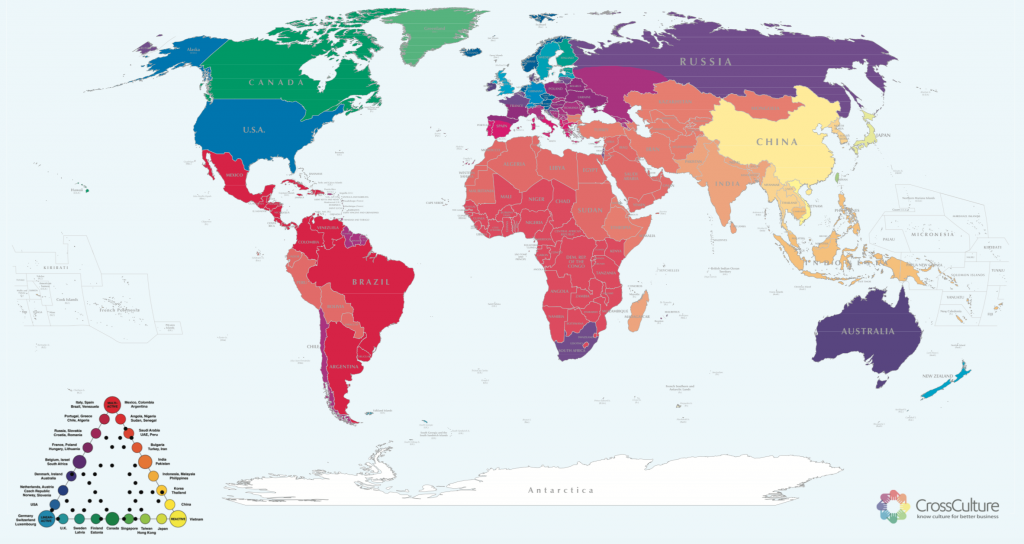Your cart is currently empty!

Internationally mixed audience – perspectives on presenting
The Irish poet George Bernard Shaw (1856-1950) said the “The single biggest problem in communication is the illusion that it has taken place”. Anyone having a partner or living in a family can confirm the eternal validity and brutal truth in these words, can’t we? How many times you heard yourself say “but I TOLD you so!” And probably vice versa too. If so difficult even between people close to one another…. imagine then how much communication is lost in space with an internationally mixed audience. The bigger the distance – geographically, culturally or personally – the more communication fails.
How will you speak to an audience that can be so different from you? With lively-tempered, dramatic Latinos; controlled, introvert Nordics; and respect-oriented, polite Asians. How will you be able to reach them? Is it enough to just “be yourself”?
Authenticity with an internationally mixed audience
Authenticity is always a must. But is it enough? Sorry – no. It goes for all of us – just communicating or presenting “as ourselves” in our default mode, will cause us to miss out on a huge part of our target groups. Different styles match with different people. One style engages some, while bores or irritates others. So, if you want to increase your chances of capturing as many as possible, what can you do?
Actually, there is information that can help you! General communication styles and patterns, as well as preferred listening styles, have been identified and illustrated for most of the countries in the world. They are available to help to prepare in tailoring to your precise target group when speaking to an internationally mixed audience.
However, for now let’s stick to an overall perspective. Imagine zooming out with Google Earth, and from a distance, you can see some general global patterns helpful to you, an overview system for guidance. The very helpful Lewis Model of Cultures has been successfully tested and used for cross-cultural understanding for years all over the world.
Lewis Model of Cultures – International Communication Styles
Based on personal preferences and natural behavior, we can group communication styles (how we speak and what we like to listen for, together with a row of other business-relevant areas) into three overall categories: Linear-active, Multi-active and Reactive styles.
Linear-active
Linear-actives (“blue category”) will, in general, communicate in a direct, straight-forward manner. They focus on facts, figures and information. They want a clear agenda, free expressions of direct opinions, discussions and issues presented and solved one by one.
Linear-actives value confrontations and mutual challenging, and polite diplomacy is not a priority. Facts are considered more important than feelings. This is the main preferred style in the Nordics, the Germanic countries and most of the English-speaking parts of the world.
Multi-active
In contrast, the Multi-active cultures (red), who are the main Mediterranean, Latino, African and Arab cultures – would be much more people- and entertainment-oriented. They love a vibrant, humorous, creative style with a display of feelings, accompanied by pictures, stories, and colors more than “cold bullet points”.
The communication style is talkative, lively and personal. Since feelings and respect override facts, it’s also more diplomatic and indirect than the linear-active style.
Reactive styles
For the last cluster, who we call the reactive cultures (“yellow category,” mainly Asian), the aims of communication would be harmony, showing (and expecting) respect and protection of face.
They expect silence, pauses, calm repetition of important points, and no disagreements or individual exposure of the audience. Building trust and relationships is an overall purpose, and the communication style is indirect, polite, and coded.

How communication style influences our presentation
The linear-active direct one’s like Americans, Germans, Dutch, Australians build on values like honesty, transparency, and efficiency. However, it often causes insecurity, fear, and loss of face for the indirect ones like multi-active and reactive.
Reversely, the indirect styles like Japanese, Vietnamese, Korean, Thai, partly Arabic, etc., build on values like respect, preservation of face, honor, diplomacy, and protecting relationships. They are often (falsely) interpreted as cowardly, weak, and dishonest from a direct point of view.
The strict bullet point slides will bore multi-active listeners to death, while too colorful and lively, unstructured slides will annoy a linear-active listener.
Many countries will also be a mix of two categories, with examples like Canada, Finland and New Zealand (blue + yellow), Russia and France (red + blue) and India and Iran (red and yellow). This must reflect in our presentations.
Logos, Pathos, and Ethos in an internationally mixed audience
And though all cultures have their main, natural style, we must remember that each culture – like any family – also consists of individuals, each with their taste. This was pointed out as early as by Aristotle, in his persuasion advice. His distinction between Logos, Pathos, and Ethos proves to be eternally helpful and inspirational.
When giving successful and convincing presentations, all three must be present in order to capture the attention of as many as possible. They correspond perfectly to our color-cultural categories, and tell you what communication should focus on:
For the linear-active / blue cultures, LOGOS (the What) has the best effect. This means clear information, accountability, logic, facts, and structure. Not too much “fluffiness,” effects, and emotional stuff!
For the multi-active/red cultures, the PATHOS (the How) works best. Activation of emotions, passion, colors, and lively effects, fun, charisma, and personal bonding.
The ETHOS (the Who) will have a strong grounding in the reactive/yellow cultures, where the “who” is essential. Your reputation, track record, title, credibility, seniority, and your ability to show respect and create a harmonious, safe atmosphere.
3 points to remember with an internationally mixed audience
Just “being yourself” will fulfill only your own preference, losing the audience from other categories! Let me put it this way; You may well be successful in communicating globally and across cultures – OR you can insist on communicating YOUR way!
If you face an internationally mixed audience, be aware of their communication style. It dramatically increases our probabilities of creating true communication – of being heard, understood, remembered – and trusted!
Always keep in mind to consciously add elements that motivate and satisfy also the audiences different from yourself, whether that means more facts and structure, or more body language, colours and stories. Make sure there is something for everyone!

Marit Imeland Gjesme
Marit helps companies to improve their communication and efficiency across cultures and borders, as trainer and coach of leaders and teams. Cross-cultural communication and cooperation are often obstacles to international success, but with diversity training programs uniquely tailored to each client, the obstacles turn into competitive advantages! She performs workshops and presentations with participants from all organizational levels, so far for over one hundred cultures. Marit works all over Europe, Asia, Australia, the Middle East and for the UN in Geneva, and her main focus is making multi-national projects, diverse teams and Mergers & Acquisitions more successful.
You are welcome to contact her for more information and a chat via marit@culture-catch.com


Leave a Reply